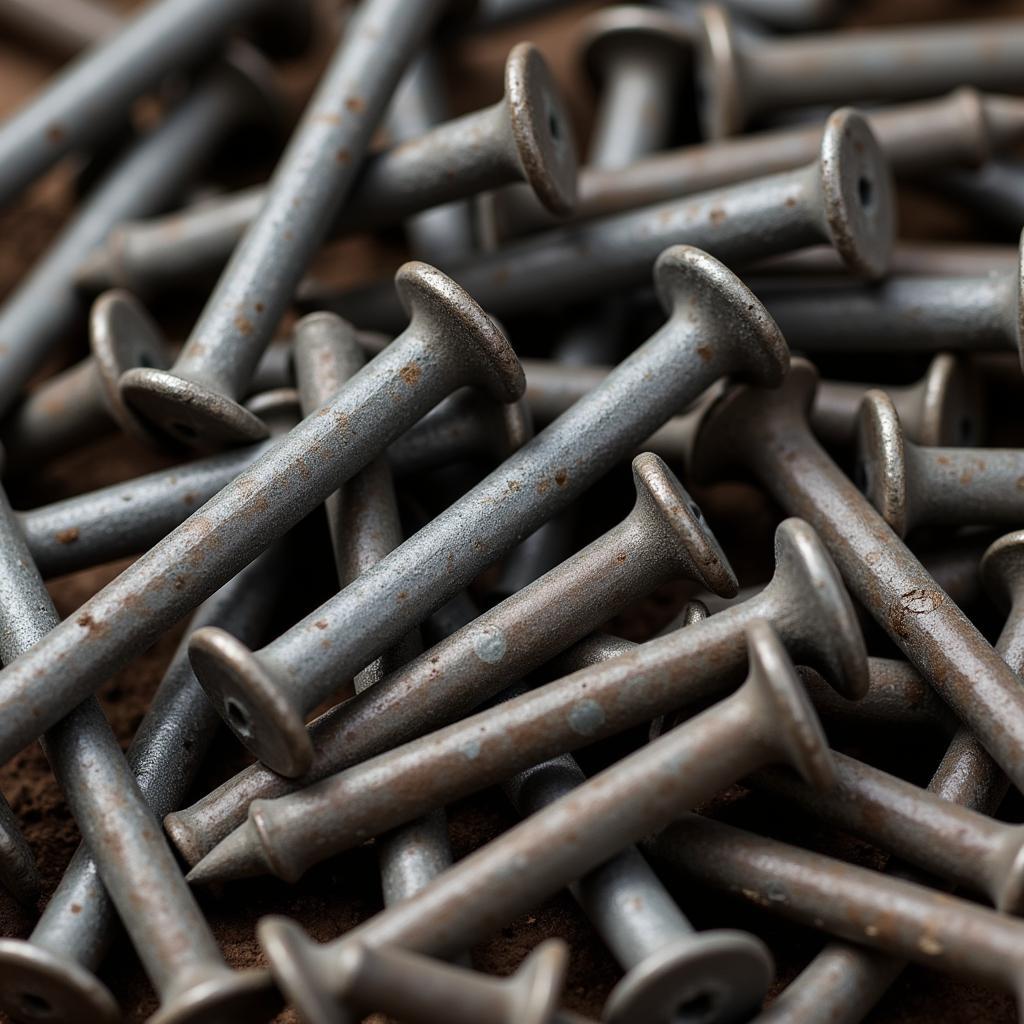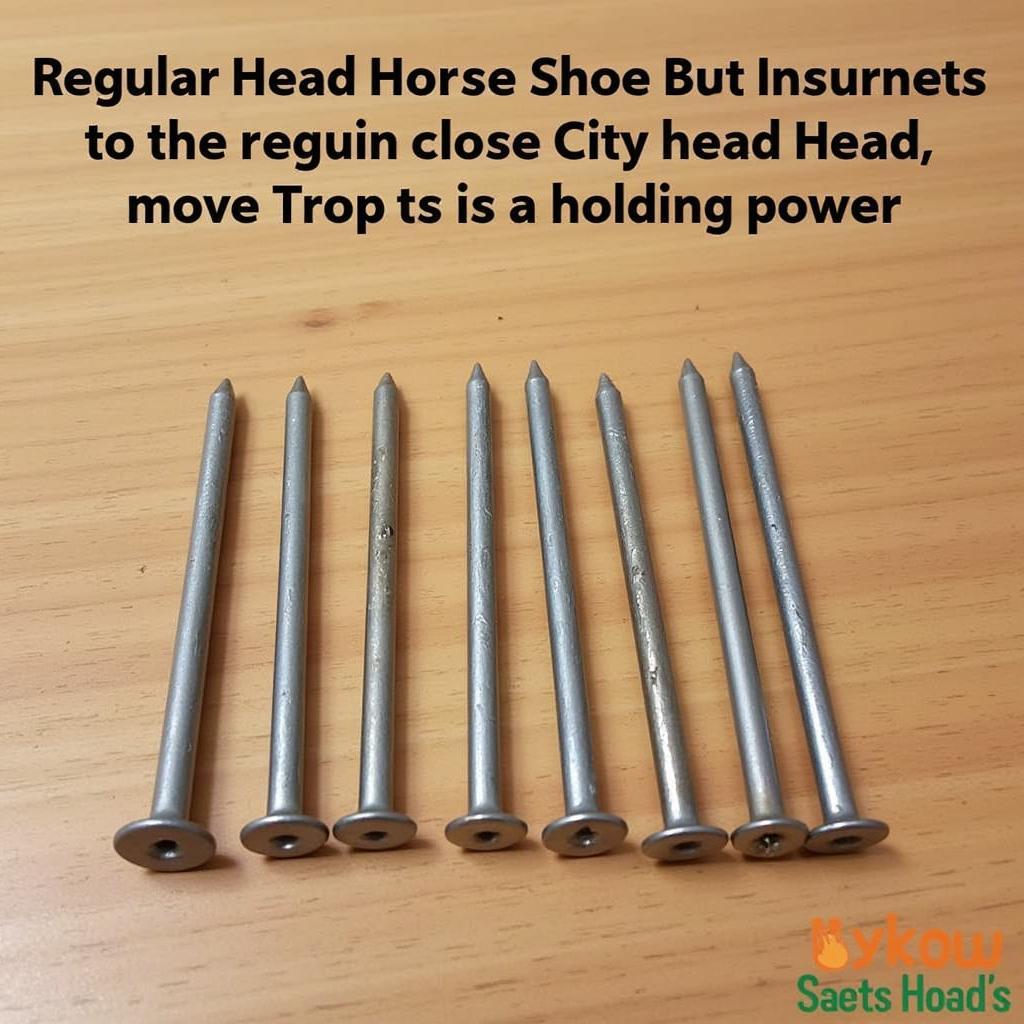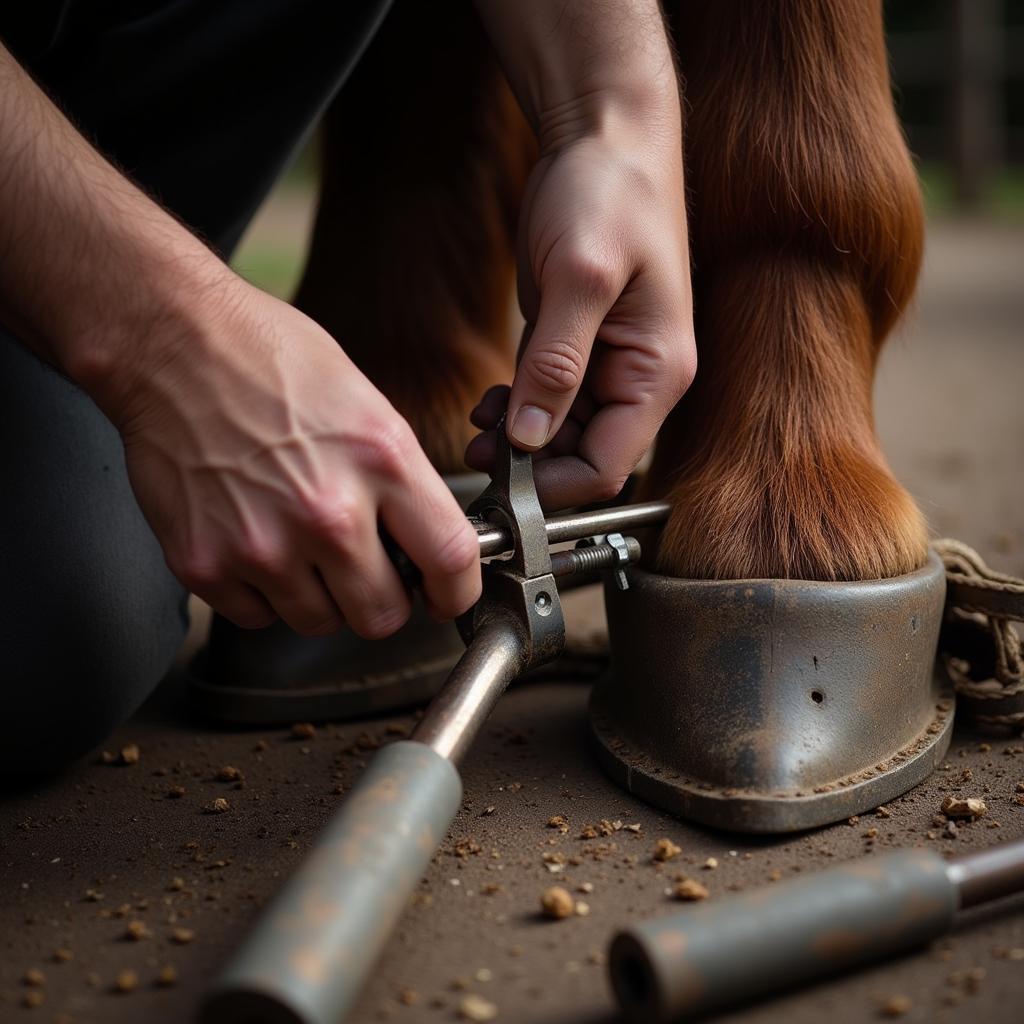Horse Shoe Nails are a vital component of equine hoof care. These specialized nails secure the horseshoe to the hoof, providing stability and support for the horse’s weight and movement. Understanding the different types, sizes, and fitting techniques of horse shoe nails is essential for farriers, horse owners, and anyone involved in equine care. This comprehensive guide will delve into the intricacies of horse shoe nails, equipping you with the knowledge to ensure your equine companion receives the best possible hoof care.
Types of Horse Shoe Nails
Just like there are different types of shoes for various occasions and activities, horse shoe nails come in a variety of shapes and sizes, each designed for specific hoof conditions and shoeing needs.
City Head Nails
 city head horse shoe nails
city head horse shoe nails
City head nails are the most common type, characterized by their large, flat head. This design provides a broader bearing surface, distributing the force of the nail more evenly against the hoof wall. They’re particularly well-suited for horses with strong, healthy hooves.
Regular Head Nails
 regular head horse shoe nails
regular head horse shoe nails
As their name suggests, regular head nails have a head size that falls between city head and slim blade nails. They offer a balance of holding power and ease of driving, making them a versatile choice for various hoof types.
Slim Blade Nails
Slim blade nails feature a narrower head and blade compared to other types. This design allows for easier penetration into harder hooves, often found in drier climates, without causing unnecessary stress on the hoof wall.
Specialty Nails
Beyond these common types, specialty horse shoe nails address specific hoof conditions. These include:
- Epona shoes: epona horse shoes These shoes offer a more natural approach to shoeing.
- Bar shoes: bar shoe for horses Bar shoes provide additional support for horses with specific hoof conditions.
- Frost nails: These nails have a double-headed design, providing extra grip during icy conditions.
- Screw-in nails: Used in therapeutic shoeing, these nails offer secure attachment and allow for adjustments.
Understanding Horse Shoe Nail Sizes
Selecting the correct horse shoe nail size is crucial for the horse’s comfort and soundness. Nails that are too small may bend or break, while nails that are too large can cause pain, hoof damage, and lameness.
Horse shoe nails are measured in inches, typically ranging from 1″ to 2 ½”, increasing in ⅛” increments. The ideal size depends on:
- Horse’s size and breed: Larger horses generally require longer nails.
- Hoof thickness: Thicker hooves can accommodate longer nails.
- Intended use: Horses used for demanding activities may need longer, sturdier nails.
The Art of Fitting Horse Shoe Nails
Proper fitting of horse shoe nails is an intricate skill that requires experience and precision. The farrier carefully drives each nail into the white line of the hoof wall, a softer, insensitive region.
 farrier fitting horse shoe nails
farrier fitting horse shoe nails
Key aspects of proper nail fitting include:
- Angle and depth: The nail should be driven at a slightly outward angle to emerge from the hoof wall approximately ¼” above the shoe.
- Clinching: After driving, the nail ends are bent over (clinched) against the hoof wall to secure the shoe.
- Finish: The clinched ends are rasped and filed to create a smooth, flush surface.
Recognizing and Addressing Potential Issues
After shoeing, it’s vital to monitor the horse for signs of discomfort or lameness. Potential issues related to horse shoe nails include:
- Nail prick: Occurs when a nail is driven too close to sensitive hoof structures, causing pain and potential infection.
- Nail bind: Happens when the shoe is fitted too tightly, restricting hoof expansion and potentially causing lameness.
- Loose nails: Loose nails can create pressure points, leading to discomfort and instability.
If you suspect any issues, consult with a qualified farrier immediately. horse sore after trim could be a sign of a bigger problem.
FAQs About Horse Shoe Nails
Q: How often should horse shoes be reset or replaced?
A: Generally, horses need their shoes reset or replaced every 4-8 weeks, depending on their hoof growth rate and activity level.
Q: Can horse shoe nails rust?
A: Yes, horse shoe nails are typically made of steel and can rust, especially in humid environments. Using rust-resistant nails or applying protective coatings can help prevent rust.
Q: What is a “quarter crack” in a horse’s hoof?
A: A quarter crack is a vertical split in the hoof wall, often occurring in the quarter (side) of the hoof. horse quarter crack can be caused by various factors and may require specialized shoeing.
Q: What are pony horse shoes?
A: pony horse shoes are smaller versions of standard horse shoes, designed specifically for the smaller hooves of ponies.
Q: Is it painful for a horse to have shoes put on?
A: When done correctly by a skilled farrier, shoeing should not be painful for the horse. The hoof wall, where the nails are driven, is insensitive.
Conclusion
Understanding the nuances of horse shoe nails is fundamental to providing optimal hoof care for your equine companion. By selecting the appropriate nail type and size, ensuring proper fitting techniques, and recognizing potential issues, we contribute to the horse’s well-being and soundness. Regular hoof care from a qualified farrier, combined with vigilant observation and proactive management, are key to keeping our equine partners happy, healthy, and performing at their best.
For any questions or concerns regarding your horse’s hoof care needs, contact Justus Horses USA at 0772127271 or [email protected]. We are dedicated to providing expert advice and support for all your equine needs. You can also visit our location at QGM2+WX2, Vị Trung, Vị Thuỷ, Hậu Giang, Việt Nam. Our team is available 24/7 to assist you!